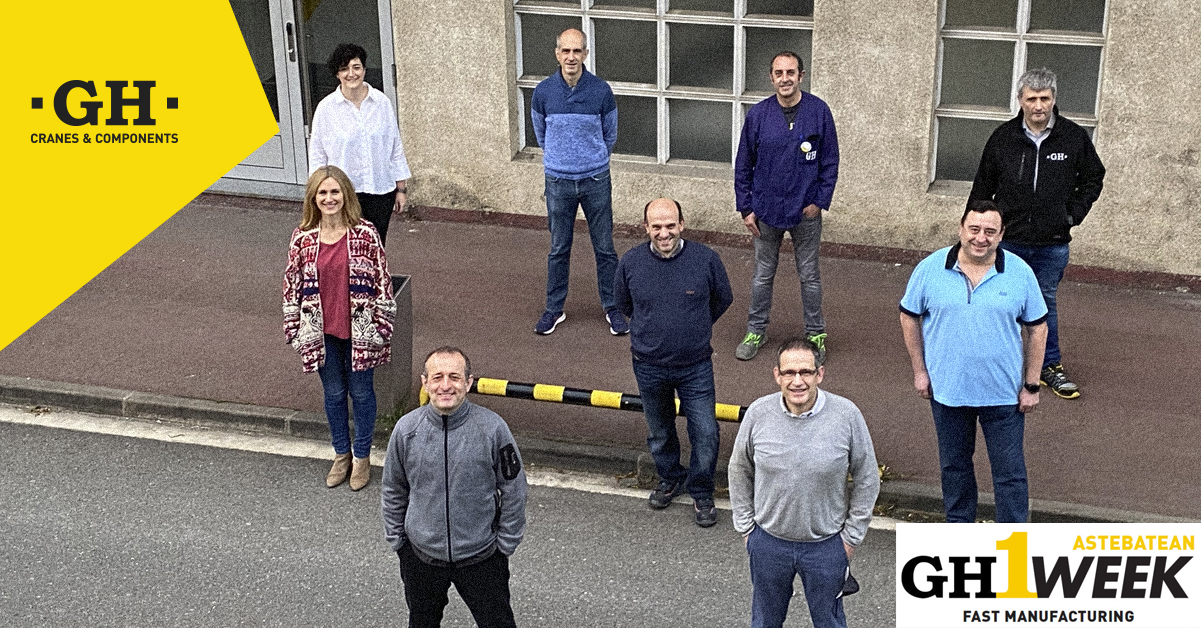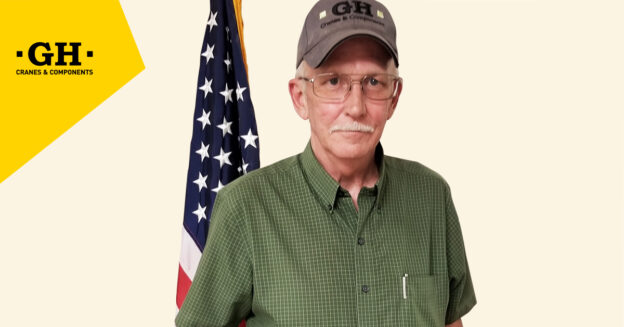El pasado octubre ‘Astebatean’ cumplió diez años, un servicio de GH Cranes que, como su nombre en euskera indica, garantiza el envío al cliente en el plazo de una semana. Para celebrar este aniversario hablamos con uno de sus principales propulsores, Martín Berakoetxea, director industrial de la Unidad de Componentes de GH Cranes.
Cuéntanos cómo nace el servicio Astebatean
Su nacimiento está íntimamente ligado a la crisis mundial del año 2009. Por un lado, las ventas de las grúas estándar habían bajado en el mercado nacional, por otro, había una necesidad desde nuestras filiales en el extranjero de mejorar los plazos de entrega en lo que a mecanismos se refiere. Esto nos llevó a realizar un exhaustivo análisis y a darnos cuenta de que bien organizados podíamos reducir los plazos considerablemente, y más teniendo en cuenta que contábamos con el compromiso por parte de la Dirección de mantener la plantilla y, por lo tanto, teníamos recursos disponibles. Otro factor relevante del nacimiento de Astebatean es que en aquel momento se dieron los primeros pasos de lo que hoy son las Unidades de Negocio, los Lantegis. Estos organizaron GH en equipos de personas orientados a sus mercados y clientes. Desde GH entendimos que la crisis representaba al mismo tiempo una oportunidad y, gracias a este avanzado servicio, pudimos adaptarnos a lo que nos exigía el mercado en un momento tan delicado.
“Gracias a este avanzado servicio, pudimos adaptarnos a lo que nos exigía el mercado en un momento tan delicado”
La idea era reducir los plazos de entrega de cinco-seis semanas a tan solo una. No es de extrañar que, en un primer momento, muchos tuviesen dudas…
Así es. La primera reunión el 22 de julio de 2009 no fue fácil, incluso tensa diría yo. Como suele ocurrir con todos los cambios, una parte del equipo vio la iniciativa con recelo y dudó sobre sus posibilidades de éxito. Sin embargo, cuando escucharon los argumentos que teníamos, la gran mayoría se convencieron. Por eso, nada más volver de las vacaciones todos nos pusimos manos a la obra.
Háblanos del equipo que llevó a cabo la puesta en marcha del servicio.
Estaba formado por veintisiete personas que dividimos en tres equipos para analizar el proceso desde la oferta a la entrega: el primero se encargó del inicio, oferta, pedido, etc… el segundo de los procesos de fabricación y proveedores, y el tercero de gestionar las expediciones. De aquellos días recuerdo la intensidad e ilusión con la que trabajamos todos. Un polipasto requiere un grado de personalización muy alto por lo que hubo que pulir cientos de detalles y mantener muchas reuniones con equipos y proveedores. El objetivo no era fácil pero la ilusión con la que trabajamos en el proyecto hizo que todo el mundo quisiera aportar ideas y soluciones. El éxito del servicio Astebatean es fruto del excelente trabajo conjunto de los tres equipos y de las personas que trabajaron en ellos.
“De los inicios del proyecto recuerdo la intensidad e ilusión con la que trabajamos todos”
¿Cómo fue acogido el servicio por los clientes? ¿Desde el principio pudo cumplirse la promesa ‘aste batean’?
El servicio fue muy bien acogido. Si el 27 de octubre salió el primer polipasto de Beasain, para diciembre ya habíamos hecho casi treinta entregas bajo el servicio Astebatean. Los clientes además enseguida nos felicitaron. Sabíamos que para tener credibilidad debíamos cumplir la promesa de entrega de una semana y así lo hemos hecho desde el principio hasta hoy. En estos diez años hemos entregado más de 3.500 kits y polipastos y en el 90% de ellos hemos cumplido el plazo de una semana y, la que no lo ha hecho, tiene un retraso medio de un día.
¿En qué ha ayudado este servicio a GH durante todos estos años?
En la complicada época en la que nació contribuyó al desarrollo de las filiales y a que GH ampliara su red comercial estando en el mercado con productos innovadores. A día de hoy representa un valor diferenciador frente a la competencia.
“Astebatean ayudó a que GH ampliara su red comercial en una época muy complicada”
Casualmente el servicio Astebatean cumple su décimo aniversario en otro año especialmente complicado. ¿Cómo le ha afectado la pandemia?
El servicio únicamente se vio afectado las dos primeras semanas de la crisis. En ese momento no teníamos todas las garantías necesarias para cumplir los plazos y, antes de fallar, decidimos parar. En la actualidad, en cambio, el servicio funciona con total normalidad y eficacia.
¿Qué mejoras tenéis pensado introducir en el futuro? ¿Reducir plazos tal vez?
Desde el principio implantamos un equipo de seguimiento de diez personas que, además de garantizar el cumplimiento de los plazos, trabaja por la mejora continua del servicio y por ir ampliando el abanico de productos disponibles en el mismo.
De momento no nos hemos planteado reducir los plazos porque creemos que no aportaría valor añadido. Solo incrementaría el riesgo de incumplir plazos y creemos que este servicio debe estar profundamente asociado a la idea del cumplimiento. Es una garantía y el principal valor.
Aunque Martín Berakoetxea haya sido elegido como el protagonista de esta entrevista, tanto él como la dirección de GH Cranes quieren agradecer el trabajo y esfuerzo de todas las personas que hicieron posible Astebatean:
Onintza Jáuregui, Aitziber Sodupe, Jon I. Bikuña, Marcelino Ormazabal, Juanjo Lazkano, Gorka Zabaleta, Alazne Gabarain, Bittor Azurmendi, José A. Astigarraga, Juan Miguel Ayestarán, Peio Odriozola, José Antonio Guerra, Víctor Guerra, Eneko Ayerbe, Fidel Bermejo, Joseba Auzmendi, Miguel Intsausti, Yoli Fernández, Iñaki Sudupe, Ainara Igiñiz, Mikel Ruiz, Alex Guerra, Asier Etxeberria
Eskerrik asko! ¡Muchas gracias!


